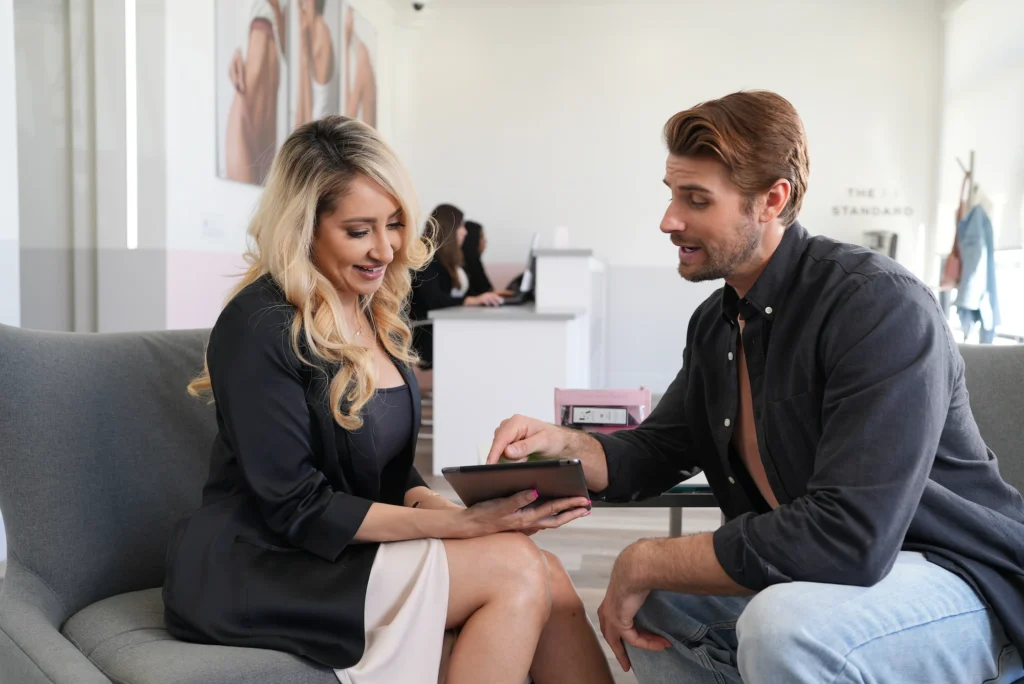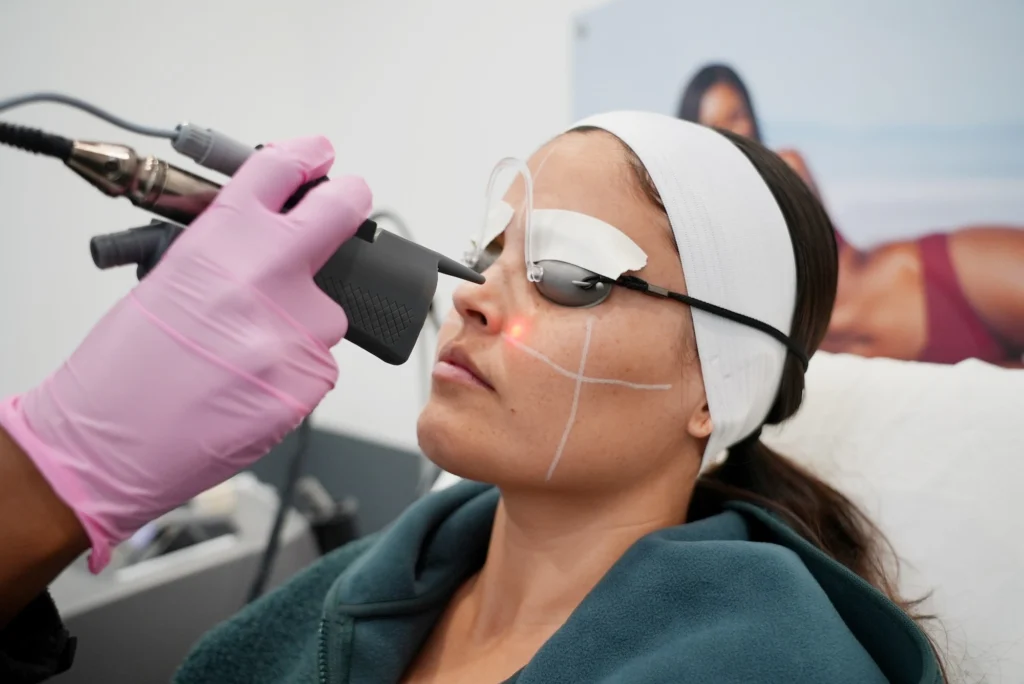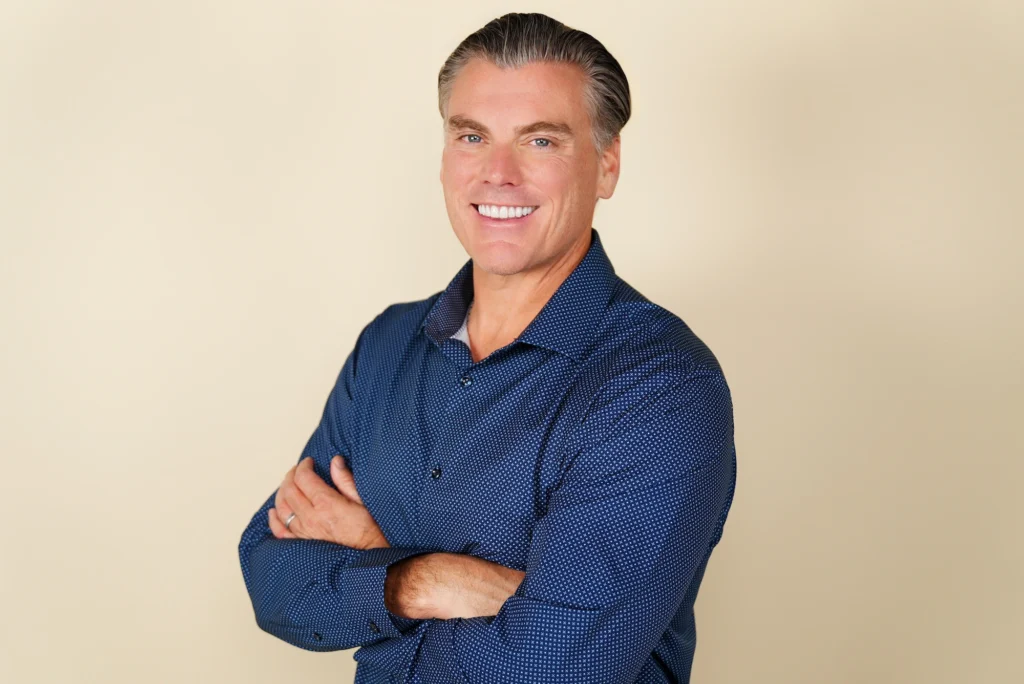The co-founder of beauty and wellness chain LaserAway, Scott Heckmann believes the rise of GLP-1s will make aesthetic services like Botox and laser hair removal more popular among the masses
LaserAway has spent nearly two decades reshaping the medical aesthetics landscape, evolving from a single clinic on Sunset Boulevard to a 200-location powerhouse.
Founded in 2006 by CEO Scott Heckmann, his brothers and Dr. Roy Winston, the group set out to make non-surgical cosmetic treatments like Botox more affordable and accessible to a wider audience, sensing an unmet demand in the market.
They were clearly onto something. Earlier this month, LaserAway celebrated the opening of its 200th location, in Nashville, Tennessee. What’s more, the brand says it hasn’t had a single location close its doors, all while staying founder-led and privately owned.
As LaserAway gears up to celebrate its 20th anniversary, Heckmann sat down with Athletech News to reflect on the brand’s early days, discuss its growth strategy and explain why we’re entering a “second wave” of wellness transformation amid the rise of GLP-1 weight-loss drugs.
The following conversation has been lightly edited for clarity and length.
Athletech News: Can you tell us about your background before starting LaserAway, and what led you to create the brand?
Scott Heckmann: I was an English major and football player at UCLA, and my first job out of college was in residential real estate. A few of my real estate clients were doctors, and one in particular was a family friend named Dr. Roy Winston. Dr. Winston owned a plastic surgery practice in Beverly Hills and was noticing a surge in popularity for non-surgical cosmetic treatments such as lasers and anti-aging injectables. This was back in 2005, when very few people knew anything about Botox and laser treatments — Botox had actually just been approved for cosmetic use, and laser technology was starting to gain attention. At the time, these treatments were only accessible to a select group of people, primarily wealthy individuals.
Dr. Winston and I, along with my brothers Brock and Todd, saw an opportunity to democratize this trend and make treatments available to a wider audience. In January 2006, we opened our first LaserAway clinic on Sunset Boulevard in West Hollywood, one block away from nightlife hotspots like “The Roxy” and “The Whiskey a Go Go”. Our mission was to make medical-grade aesthetic treatments more accessible. We wanted people to have access to the same high-quality medical care without the intimidation or exclusivity that came with the typical plastic surgeon’s office.
From day one, everything we did was centered on medical safety, leveraging science and patient inclusivity. LaserAway has always required licensed medical professionals to perform every treatment, and we invested early in technology that could safely treat all skin tones. That commitment shaped the foundation for what LaserAway has become.

ATN: Looking back at the last two decades, what have been the keys to scaling to 200 locations?
SH: The most significant factor has been consistency. From the outset, we developed a model that could grow safely without compromising quality. Our medical teams work tirelessly to create medical protocols, training standards and procedures that put patient care first.
Our expansion has never been about speed; it’s always been about doing it the right way. Our main goal is to deliver the same exceptional service to every patient, whether they are being treated in Los Angeles or Houston. That approach has enabled us to reach 200 clinics without closing a single one over 20 years. We recently celebrated this milestone with our 200th location opening in Nashville.
Scale has also helped us create value for our patients. Because of our size, we can negotiate better pricing on products and technology, which allows us to pass those savings along to customers. Another key is the medical infrastructure behind the brand. LaserAway’s medical team consists of more than 20 board-certified dermatologists, who oversee every treatment we offer.
We’ve also stayed true to our mission. We don’t chase trends or add treatments just because they’re popular; we only expand when the science supports it and when we’re confident we can deliver the same high standard of care at every clinic.
ATN: What separates LaserAway from other beauty or wellness clinics offering similar services?
SH: LaserAway is a medical practice first. Everything we do is grounded in dermatology and performed by licensed medical professionals, including nurses, nurse practitioners and physician assistants, under the supervision of our board-certified dermatologists.
What also sets us apart is inclusivity. From the outset, we invested in laser technology that could safely treat every skin tone. Most providers at that time couldn’t, which meant many people were being excluded from the category entirely. We made it our mission to serve those patients and to make the experience feel approachable for everyone. We’ve always wanted people to feel comfortable walking into a LaserAway clinic, whether it’s their first treatment or they’ve been a patient for several years.

ATN: You’ve spoken about a “second wave of transformation” as things like GLP-1s become popular. What does this mean, and why is it important for brands like LaserAway?
SH: The first wave was focused on helping people take control of their physical health. What we’re seeing now is a shift into something bigger. People who have reached their weight goals are feeling more confident, and they’re thinking about what comes next. They’re feeling stronger and more energized, and now they want their appearance to reflect that transformation.
Across our clinics, we’ve seen a steady increase in patients who’ve completed the first phase of transformation and are now seeking refinement. They’re asking about noninvasive treatments that help them look refreshed and balanced, from skin tightening and collagen stimulation to laser resurfacing and body contouring.
ATN: What are the biggest trends in beauty and wellness services right now, and how do you expect these to change the industry over the coming years?
SH: The younger patient has fully discovered that thanks to modern advancements in laser technology and injections, it’s now possible to delay the signs of aging. We’re seeing a move toward younger people starting these types of treatments to help delay the signs of aging. That’s why there’s a growing interest in treatments like laser skin rejuvenation such as Clear + Brilliant and RF microneedling such as Potenza. Rejuran is an exciting company out of South Korea that uses regenerative properties of salmon DNA to boost skin health from within. These therapies have real potential to improve skin quality and support longevity.
We’re also seeing more overlap between aesthetics and wellness. GLP-1s are the biggest medical breakthrough of a generation, and they’re so popular that patients are asking what other types of peptide and longevity injections are out there. Glutathione and NAD+ injections are bringing in new patients to LaserAway who may never have visited a clinic before.

ATN: What are your expansion plans moving forward? How much bigger can LaserAway become, both in the U.S. and internationally?
SH: We’re still growing, but we’re doing it thoughtfully. We’ve just opened our 200th clinic in Nashville, marking a significant milestone for the team, and we continue to see strong demand nationwide. The goal isn’t to open clinics everywhere, but to bring the LaserAway experience to markets where we know we can maintain the same level of safety, quality and clinical integrity that defines the brand.
What makes this moment especially exciting is that January 2026 marks our 20th anniversary. We’ve grown from one clinic on Sunset Boulevard to 200 nationwide without closing a single location, which is a testament to the resilience and scalability of our model. Even after two decades, we’re still founder-led and privately owned, which allows us to stay true to the mission we started with of making medical-grade aesthetic dermatology accessible, inclusive and trusted. That same mission will continue to guide our next phase of growth.



